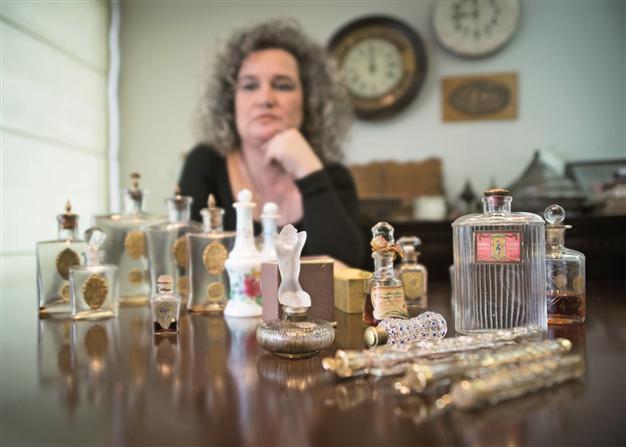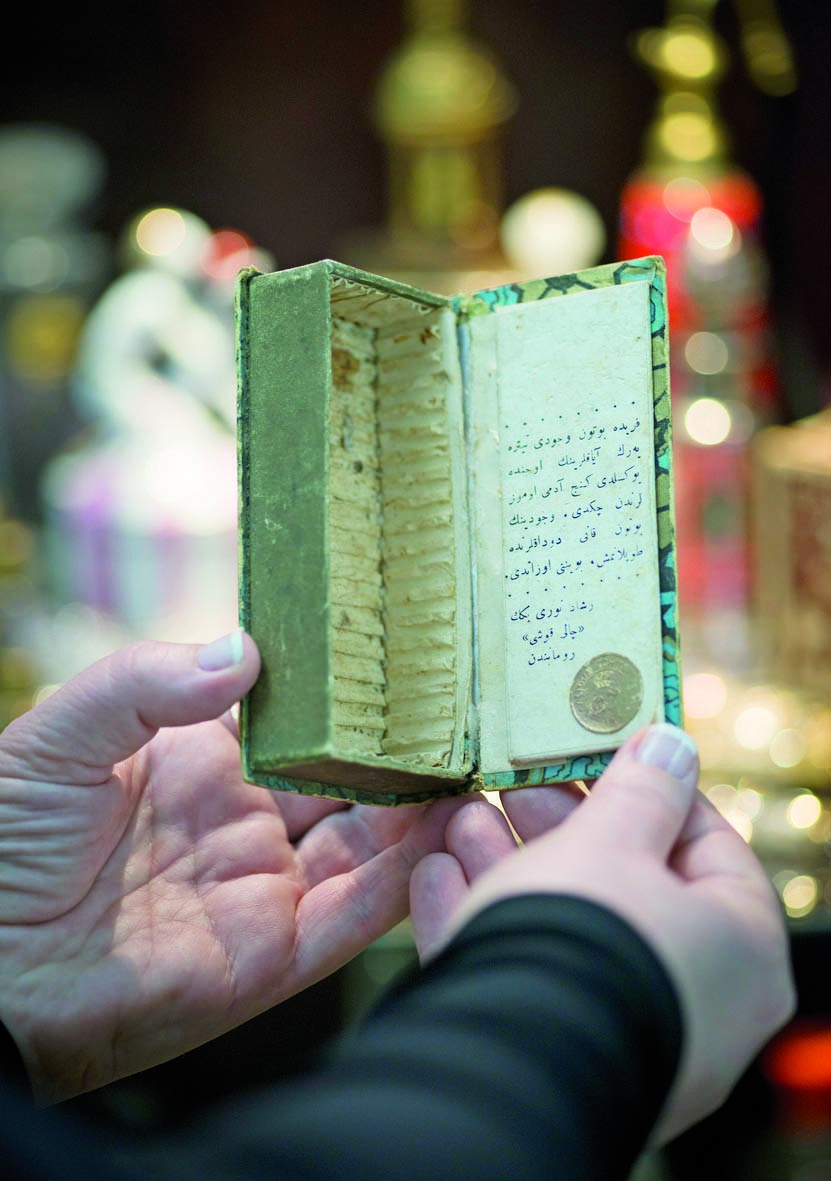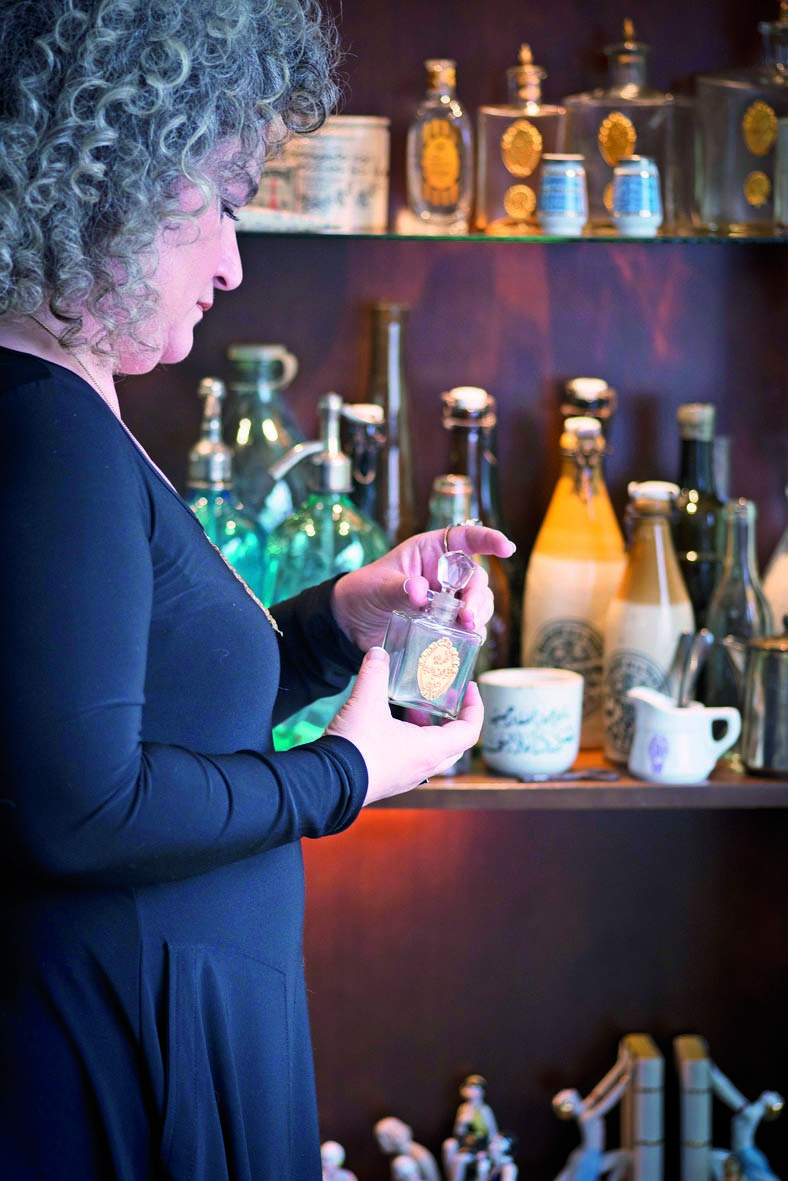Researchers following the scent of Ottomans
İZMİR - Anadolu Agency

A sample of the perfume (R), which was produced in the 1920s with inspiration from Reşat Nuri Güntekin’s famous novel ‘Çalıkuşu’ (The Wren), is also in the collection called ‘Ottoman Cosmetology.’ AA photos
Just following their nose, a collector and researcher couple from İzmir has created a collection featuring thousands of perfume samples from the Ottoman and early Republic period.“The collection includes everything people make for their body with the purpose of cleaning and adorning themselves. We carry out this work comparatively. We don’t only focus on the Ottoman lands but we are working comparatively with Europe, namely the Western lands. We have a very large collection,” said Aybala Yentürk, who created the collection, “Ottoman Cosmetology,” along with her husband, Nejat Yentürk, adding that they first began their research 21 years ago.
Yentürk said their wide collection revealed the richness of Ottoman-Eastern perfume production and that they wanted to show this richness to people.
The researcher said nice fragrances were important in Muslim societies and that an appreciation of perfumes had survived in Anatolia during the Ottoman Empire.
 She said various kinds of expensive perfumes had been produced in the Islamic world during the Middle Ages, adding that the habit of using nice fragrances was brought to the West with the Crusades.
She said various kinds of expensive perfumes had been produced in the Islamic world during the Middle Ages, adding that the habit of using nice fragrances was brought to the West with the Crusades. Perfume inspired by famous novel
She said their collection also included a sample of the Çalıkuşu perfume, which was produced in 1920s with inspiration from Reşat Nuri Güntekin’s famous novel “Çalıkuşu” (The Wren) and has recently become a topic of interest once more.
“It was a piece that lends impetus to our collection qualitatively but not quantitatively, and we were lucky to find it. The Çalıkuşu perfume is a first in terms of both Turkish literature and Turkish perfume production. There are some examples in Europe but for the first time in Anatolia, a company called Altunçiçek produced a perfume taking inspiration from a work. The box of the perfume is a book shape and the box’s cover features an Ottoman statement on the meeting of Feride and Kamran, the leading characters of the novel.”
She said they were able to find the box for the perfume but that the perfume bottle had been lost, meaning they were unable to determine the original scent.
The novel’s main character, Feride, was a new character for Turkish society and literature, she said, adding that the perfume befit her personality.
Another valuable sample in the collection was a perfume which was produced in Europe but sent to African countries, said Yentürk, adding that the perfume’s box featured planes and Turkish flags from the years of the War of Independence, as well as a picture of Mustafa Kemal Atatürk.
She said the War of Independence was a source of inspiration for many societies. “This is a European-
 style example, but it was designed to appeal to the East. Taking inspiration from Atatürk, a French producer produced a perfume for North African countries. The dome-shaped perfume bottle shows that it was produced to appeal in the East.”
style example, but it was designed to appeal to the East. Taking inspiration from Atatürk, a French producer produced a perfume for North African countries. The dome-shaped perfume bottle shows that it was produced to appeal in the East.” She said the first alcoholic perfume entered the Ottoman Empire during the era of Abdülhamit II and that the sultan himself had used Eau de Cologne. “Our perfumes were made of scented water, paste and scent. The first perfume came to the Ottoman Empire in the first half of the 19th century,” she added.
Yentürk said the first Western-style perfume producer on Ottoman soil was Ahmet Faruki, who began production in 1894.
Traditional scents in the Ottoman era were musk, amber, cinnamon and rose water, said Yentürk. “From the very beginning, we wanted to reveal the richness of the East to the West, as the East is so rich and the Ottoman Empire was an extension of it. Some perfumes produced in the 19th century still smell because they are not synthetic; they were produced with natural materials.”
















